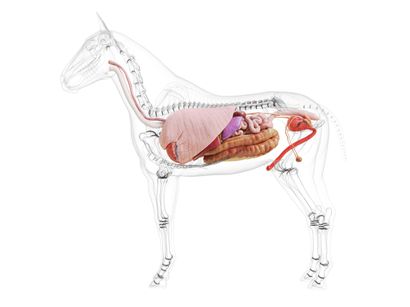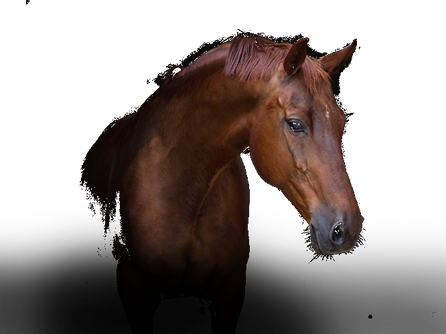Gut and Intestines
The horse's digestive tract is long, large, and plays a crucial role in its well-being. Unlike the human digestive system, the horse has a relatively small stomach and a dominant large intestine, which includes the cecum and large colon.
The horse's stomach relies on a constant flow of feed to maintain a healthy environment. The feed stays in the stomach for a short time before passing into the small intestine. In the small intestine, the feed moves quickly, and the easily accessible nutrients are absorbed. The indigestible fibers reach the large intestine, where they remain for a long time to be fermented and digested. The fermentation process extracts the energy from the fibers and helps generate heat and energy for the horse.
The horse's stomach relies on a constant flow of feed to maintain a healthy environment. The feed stays in the stomach for a short time before passing into the small intestine. In the small intestine, the feed moves quickly, and the easily accessible nutrients are absorbed. The indigestible fibers reach the large intestine, where they remain for a long time to be fermented and digested. The fermentation process extracts the energy from the fibers and helps generate heat and energy for the horse.
Horses have evolved over centuries to graze and eat fiber for several hours a day. This is a key foundation for how we today recommend feeding and caring for horses, as a management system adapted to their basic needs is crucial for their well-being.




